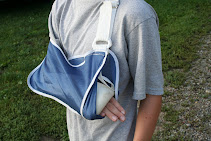Accidents involving bicycles can be fatal. On the other hand, if a rider luckily survives an accident, he may sustain severe injuries that could lead to a disability. A look at the article, “Six-year-old Boy Suffers Severe Head Injuries in California Bicycle Accident”, posted on August 4, 2008, will tell you that injuries from these accidents are no laughing matter.
According to the article, the accident occurred when the rider made a sudden U-turn and collided with an oncoming car. The victim was not wearing a helmet and as a result, he suffered a “depressed skull fracture”. He was reportedly in “critical but stable condition”.
News accounts attributed the cause of the accident mainly to the victim, or largely to that sudden U-turn he made directly into the path of the car. Nevertheless, facts regarding the accident are yet to be confirmed, especially in the light of information that the six-year old boy was actually wearing a helmet when the incident happened and he would not have survived the serious injuries he incurred were it not for it.
In order to find liability in a bicycle accident, it is first necessary to establish the facts of the incident. Accounts from independent witnesses, physical evidence culled from the site of the accident, and police accident and medical reports may form a substantial body of evidence that could help a victim pursue claims in a bicycle accident. Without these, proving liability in any accident may be difficult even for a lawyer.
In this incident, the following questions must be satisfied first:
• What are the relative positions of the vehicles and the damages incurred on both vehicles?
• Why was the car so close to the bicycle?
• Why didn’t the car stop when the rider turned towards her?
• How close was the car to the bicycle?
• Are the car’s brakes in good condition?
• Why is a six-year old boy allowed to ride alone on the streets and without adult supervision?
In the end, the victim’s family would truly need a good personal injury lawyer to establish liability of the other party (car driver) in this accident. All information related to the accident will ultimately determine who is to blame for injuries incurred by a victim in an accident such as this.
According to the article, the accident occurred when the rider made a sudden U-turn and collided with an oncoming car. The victim was not wearing a helmet and as a result, he suffered a “depressed skull fracture”. He was reportedly in “critical but stable condition”.
News accounts attributed the cause of the accident mainly to the victim, or largely to that sudden U-turn he made directly into the path of the car. Nevertheless, facts regarding the accident are yet to be confirmed, especially in the light of information that the six-year old boy was actually wearing a helmet when the incident happened and he would not have survived the serious injuries he incurred were it not for it.
In order to find liability in a bicycle accident, it is first necessary to establish the facts of the incident. Accounts from independent witnesses, physical evidence culled from the site of the accident, and police accident and medical reports may form a substantial body of evidence that could help a victim pursue claims in a bicycle accident. Without these, proving liability in any accident may be difficult even for a lawyer.
In this incident, the following questions must be satisfied first:
• What are the relative positions of the vehicles and the damages incurred on both vehicles?
• Why was the car so close to the bicycle?
• Why didn’t the car stop when the rider turned towards her?
• How close was the car to the bicycle?
• Are the car’s brakes in good condition?
• Why is a six-year old boy allowed to ride alone on the streets and without adult supervision?
In the end, the victim’s family would truly need a good personal injury lawyer to establish liability of the other party (car driver) in this accident. All information related to the accident will ultimately determine who is to blame for injuries incurred by a victim in an accident such as this.



